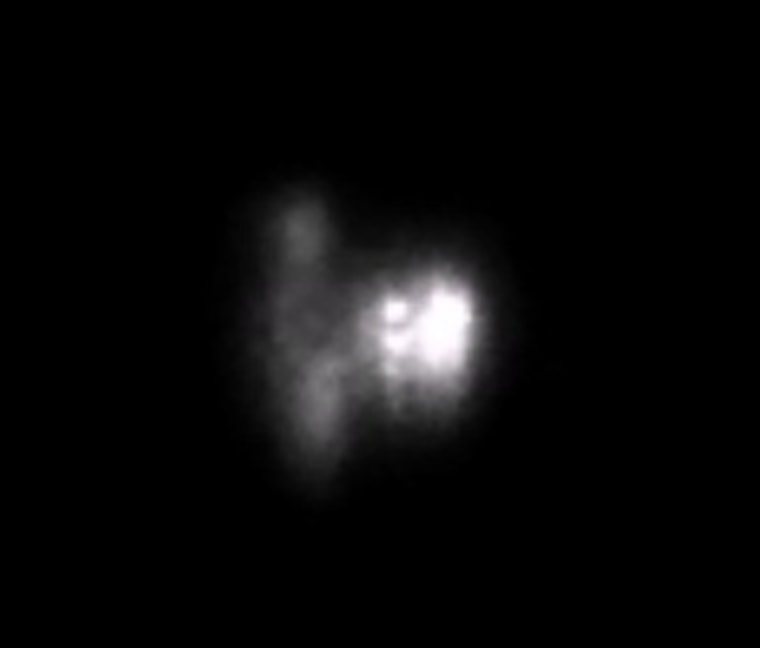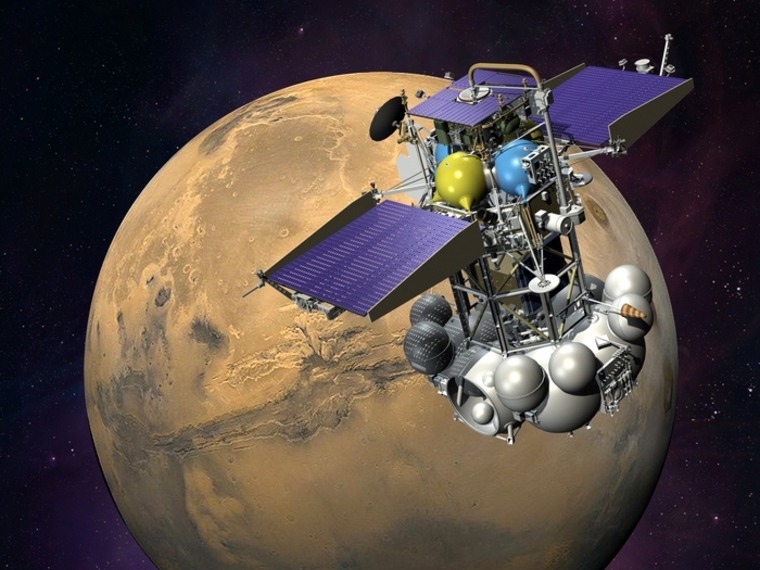Fragments of a failed Russian space probe are now expected to fall to Earth on Jan. 15, officials said Wednesday.
The unmanned Phobos-Ground probe was launched Nov. 9 on what was supposed to have been a 2½-year mission to the Martian moon Phobos to take soil samples and fly them back to Earth, but it became stuck in Earth orbit. Attempts to send commands that could propel it toward the Martian moon were unsuccessful.
As the probe's orbit slowly deteriorated, space officials predicted it would come crashing down between late December and late February.

A precise date was given Wednesday by a spokesman for the air and space defense troops, who said any fragments that do not burn up in the atmosphere are expected to fall to Earth on Jan. 15. The date could still be affected by external factors, and Defense Ministry troops are monitoring changes in the probe's orbit, Russian news agencies quoted Alexei Zolotukin as saying.
Satellite-watcher Ted Molczan said his analysis of decay data from the U.S. Strategic Command suggested that the fall would come early Jan. 16, with an estimated uncertainty of plus or minus two days. Meanwhile, French astrophotographer Thierry Legault said he captured a video showing the 13.2-metric-ton (14.6-ton) satellite flying about 150 miles (237 kilometers) above Earth on Jan. 1.
Molczan and Legault shared their reports on Wednesday via the SeeSat-L mailing list.
Most of Phobos-Grunt's mass, about 11 metric tons (12 tons), consists of highly toxic fuel. Experts have said that if the fuel has frozen, some could survive the plummet to Earth, but that if it is liquid it will likely combust from the heat of re-entering the atmosphere.
This report includes information from The Associated Press and msnbc.com.
